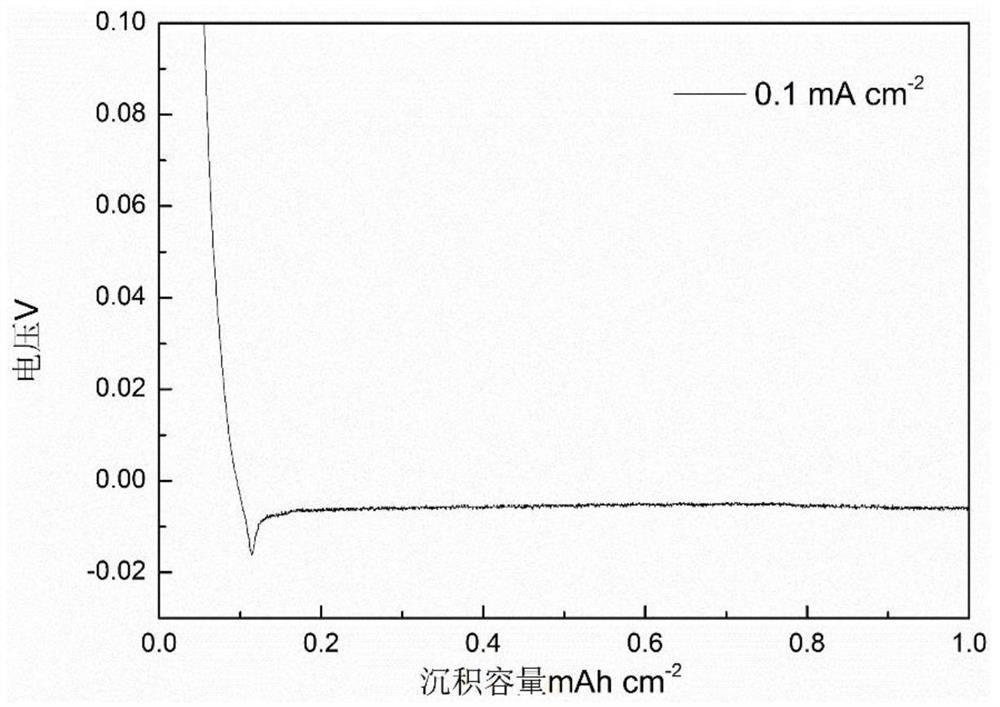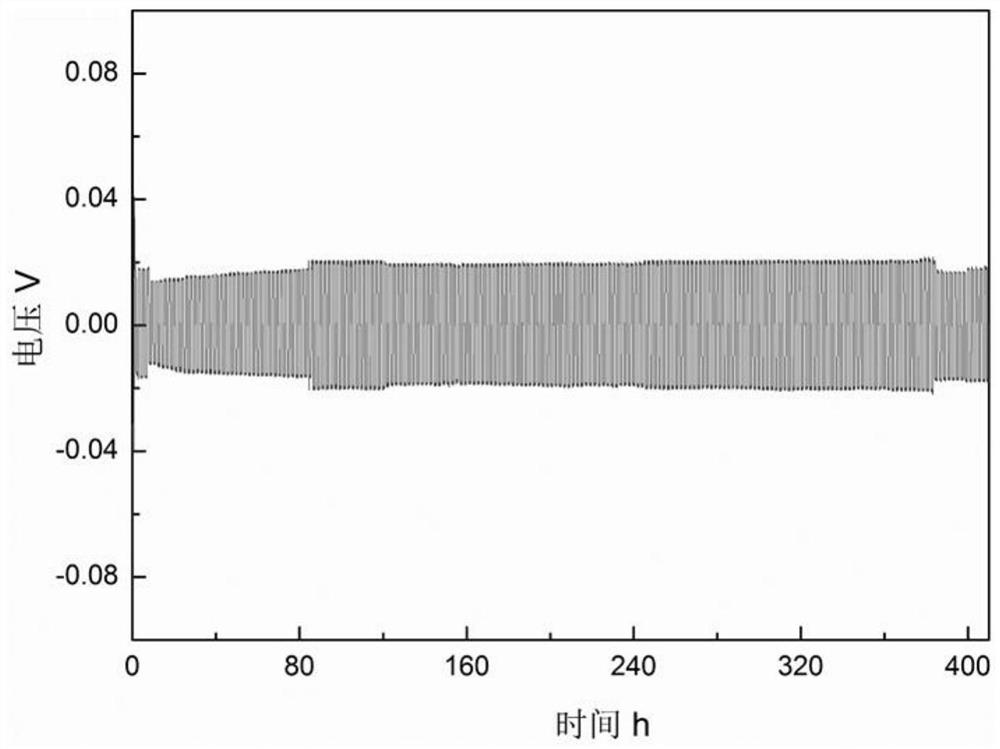Protection method of alkali metal negative electrode, negative electrode made and application thereof
A technology of alkali metal and alkali metal batteries, which is applied in the direction of battery electrodes, structural parts, electrical components, etc., can solve the problems of dendrite growth, uneven metal deposition, etc., and achieve adjustable porosity, improved protection, and uniform metal deposition effect
- Summary
- Abstract
- Description
- Claims
- Application Information
AI Technical Summary
Problems solved by technology
Method used
Image
Examples
Embodiment 1
[0058] A mixture obtained by mixing polymer polyimide with graphene after carbonization at 800°C for 2 hours was selected, and then pressed into a film in a hot roller press to obtain a thermally conductive carbon film. The film-forming pressure was 8MPa, and the roller The pressing speed is 0.5 m / min, and the temperature is 400°C. The obtained thermally conductive carbon film was cut into discs with a diameter of 15 mm. The graphene content in the thermally conductive carbon film is 20%, the porosity is 5%, and the thickness is 50 μm. Using metal lithium as the working electrode and copper foil as the counter electrode, add and stack on the surface of metal lithium and cover the surface of metal lithium sheet. (The following cases, unless otherwise stated, the setting of the protective layer is the same as this case) The thermal conductive carbon film is used as the protective layer, with 1M LiTFSI+DOL-DME+2%LiNO 3 The electrolyte is assembled into a button half cell and a ...
Embodiment 2
[0060] Compared with Example 1, the difference is that the content of graphene is changed, specifically:
[0061] A mixture obtained by mixing polymer polyimide with graphene after carbonization at 800°C for 2 hours was selected, and then pressed into a film in a hot roller press to obtain a thermally conductive carbon film. The film-forming pressure was 8MPa, and the roller The pressing speed is 0.5 m / min, and the temperature is 400°C. The obtained thermally conductive carbon film was cut into discs with a diameter of 15 mm. The graphene content in the thermally conductive carbon film is 25%, the porosity is 7%, and the thickness is 50 μm. Use metal lithium as the working electrode, copper foil as the counter electrode, add the thermally conductive carbon film on the surface of metal lithium as a protective layer, and use 1M LiTFSI+DOL-DME+2%LiNO 3 The electrolyte is assembled into a button half cell and a button symmetrical cell. at 0.1mA / cm 2 current density and 1mAh / cm...
Embodiment 3
[0063] Compared with Example 1, the difference is that the film-forming pressure is changed, specifically:
[0064] A mixture obtained by mixing polymer polyimide with graphene after carbonization at 800°C for 2 hours was selected, and then pressed into a film in a hot roller press to obtain a thermally conductive carbon film. The film-forming pressure was 6MPa, and the roller The pressing speed is 0.5 m / min, and the temperature is 400°C. The obtained thermally conductive carbon film was cut into discs with a diameter of 15 mm. The graphene content in the thermally conductive carbon film is 20%, the porosity is 9%, and the thickness is 70 μm. Use metal lithium as the working electrode, copper foil as the counter electrode, add the thermally conductive carbon film on the surface of metal lithium as a protective layer, and use 1M LiTFSI+DOL-DME+2%LiNO 3 The electrolyte is assembled into a button half cell and a button symmetrical cell. at 0.1mA / cm 2 current density and 1mAh / ...
PUM
| Property | Measurement | Unit |
|---|---|---|
| thickness | aaaaa | aaaaa |
| thickness | aaaaa | aaaaa |
| thickness | aaaaa | aaaaa |
Abstract
Description
Claims
Application Information
 Login to View More
Login to View More - R&D
- Intellectual Property
- Life Sciences
- Materials
- Tech Scout
- Unparalleled Data Quality
- Higher Quality Content
- 60% Fewer Hallucinations
Browse by: Latest US Patents, China's latest patents, Technical Efficacy Thesaurus, Application Domain, Technology Topic, Popular Technical Reports.
© 2025 PatSnap. All rights reserved.Legal|Privacy policy|Modern Slavery Act Transparency Statement|Sitemap|About US| Contact US: help@patsnap.com



